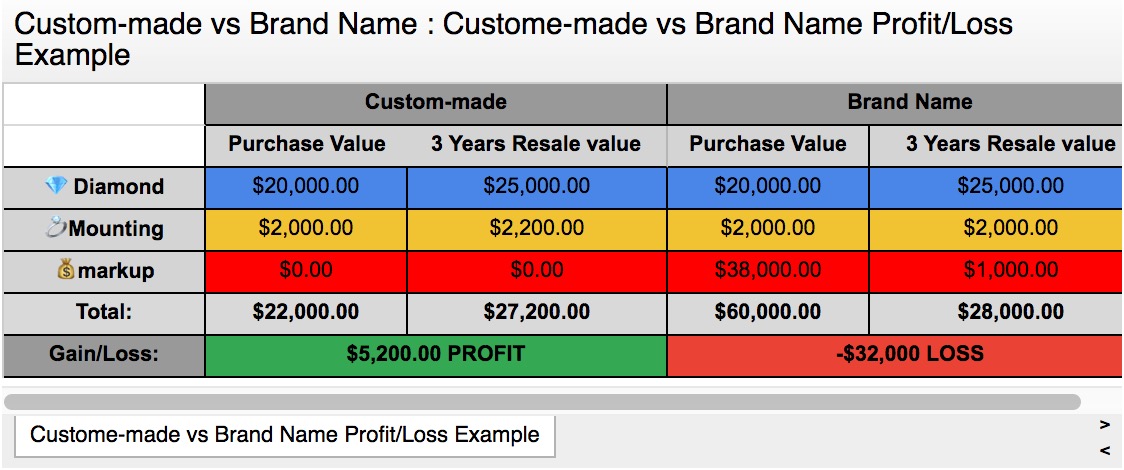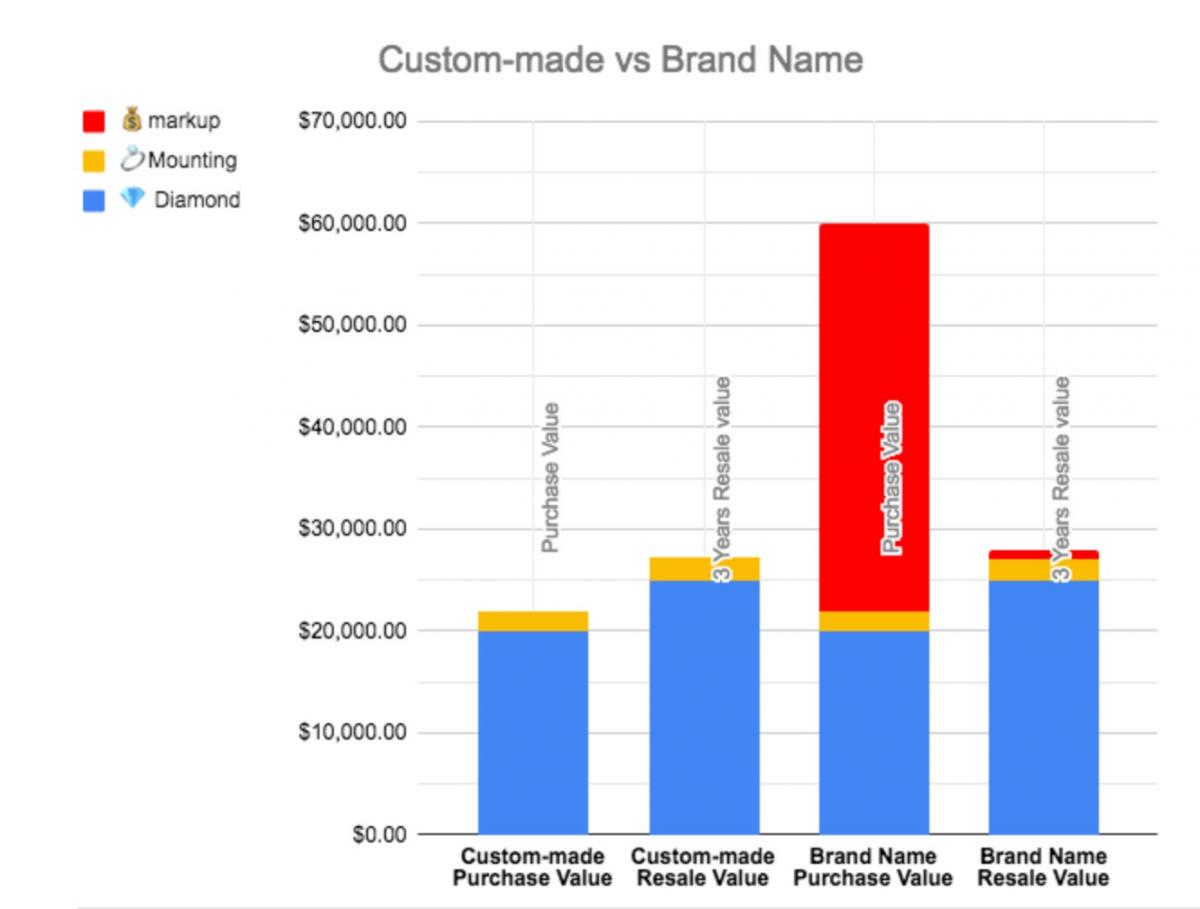Diamond jewelry and gemstone jewelry are different from other consumer products. The majority of consumer products are depreciating goods that lose value due to wear and the slow decay of time. Examples of this range from automobiles to clothing. Diamond and gemstone jewelry, however, do not deteriorate with time. Due to these rare attributes, we at Kashi Diamonds believe that diamond and gemstone jewelry are compelling long-term investments, in addition to being attractive luxury goods over any time period.
When consumers buy jewelry directly from high-end brand names, including Tiffany, Cartier, BVLGARI, GRAFF, etc., up to two-thirds of the cost is for the premium of the name and all of the associated expenses (rents, marketing, salaries, etc). Oftentimes, the cost of materials and manufacturing labor makes up less than a third of the final retail price. Since diamonds and gemstones are imperishable, this markup for the brand name takes away from the intrinsic value that the consumer should retain for the actual diamond or gemstone. Therefore, buying NEW branded jewelry makes no sense investment-wise (note that I wrote “new,” since antique and vintage jewelry can be exceptions to this).
Another aspect that differentiates the jewelry industry from other consumer products is that the vast majority of the value of a piece lies in the core large size diamonds and/or gemstones. The mounting, which may include a gold ring with smaller diamonds, is just a small fraction of the price. Retail brands grossly mark up the price for the entire product and not just for the mounting, applying a broad targeted margin to their final cost. The excessive premium consumers then pay for the final product -- including the main large size diamond or gemstone -- renders the purchase a poor overall investment.
As an example, let’s examine the ring featured in the video above. The cost of the main 2ct diamond is approximately $20,000 USD. The cost of the mounting is only $2000. Buying this ring branded may cost anywhere from 3 to 4 times as much ($60,000 to $80,000). Why? Brands add a premium to the final finished product, including their costs for the main diamond or gemstone, even though they buy the polished gemstones/diamonds from the same manufacturers as small non-branded jewelers.

We can also assess this from an investment perspective by comparing the resale value of that same example piece. The premium of the brand will not be reflected in the main diamond or gemstone, but only in the mounting. Therefore, when you try to resell a brand name piece, every professional in the industry will still value the main diamond at $20,000, even though you bought it for 3-4 times as much at a Cartier or a Tiffany. The premium of the brand name and the design will be reflected only in the mounting. In our case, the residual mounting worth $2000 would net you perhaps $3000 as a branded item (remember, you bought the entire piece for $60,000 to $80,000). Contrarily, the resale value of non-branded jewelry would be closer to the purchase price, or in our example, $22,000. In most cases, given historical trends, you will be able to sell the item for a profit (given that you buy it at wholesale prices from a manufacturer like us). What other consumer products would you be able to sell for a profit after years of using it?

While raw stones are a great investment that both retains and appreciates in value when buying from us (versus the immediate implied haircut of a branded item), there are also other benefits to custom-made jewelry, including the option to create your own unique design and a personal experience with the jeweler who will closely work with you from start to finish. Every diamond is unique, and every piece of jewelry should also be authentic and specific to a person or event (it can be anything from an engagement ring to the design of a family heirloom). A one-of-a-kind design can be essential to the romance of a marriage proposal or an anniversary present. It shows not only the amount spent, but also meaningful effort, thought, and heart behind the gesture.
In the pictures above from our Instagram feed, the customer really wanted both the “knife-edges” associated with “Tiffany” rings and the diamond-mounted prongs associated with “Cartier” rings (even though both are considered ubiquitous designs in the industry, they became associated with these brand names). Working with him closely, we designed the CAD model and after a few back-and-forth changes, we ended up with this perfect unique design. Scroll right to see the process.
